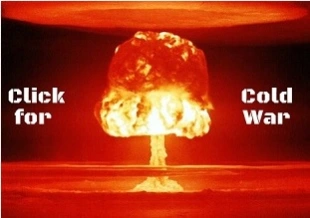Dr Strangelove Or: How I Learned To Stop Worrying And Love The Bomb (1964) ~ Review
Directed by: Stanley Kubrick
Starring: Peter Sellers, George C Scott, Sterling Haydn, Keenan Wynn, Slim Pickens, Tracy Reed
Screenplay by: Stanley Kubrick, Terry Southern and Peter George
US/ UK; 95 minutes; Black-and-white; Certificate: PG
~~~
The last time I saw Dr Strangelove, admittedly a few years ago now, I wasn’t enormously impressed because I figured it’s supposed to be a satire, however it’s not that funny. And, to some extent, that’s still the case for me. Strangelove simply isn’t much of a laugh-out-loud film. Fair enough. Although, to be that great a satire (like say, 1976’s Network), perhaps it should be a bit more laugh-out-loud? I don’t know.
All the same, it didn’t… hmmm, I mean no pun here but, mis-fire for me quite the way it has before. It is, simply, a class piece of work, telling, as it does, the tale of how a multiple nuclear disaster is put in motion and then attempted to be averted (all thanks to a crazy piece of kit entitled the ‘Doomsday Device’), which, at times, seems as far-fetched as the Dr Strangelove character himself; at others, worryingly, all too believable.
The guiding hand that is Kubrick’s direction is steady throughout, despite however ludicrious a turn the events on screen take, while Sellers’ three performances (his subtlely anxious US President, his mockingly upstanding RAF Brit and his delightfully unrestrained lunatic creation that is Strangelove) are magnificent. George C Scott also hugely impresses as the Commie-hating US general, whose ‘straighter’ performance helps push through a lot of the film’s pointed ideas. Legendary designer Ken Adams’ sets (although in monocrome) are a delight – the War Room is a tour de force, of course – and the script, co-written by ’60s legend Terry Southern, ripples and burns nicely throughout, with some truly terrific lines.
Although one could argue that watching it outside of the boiling kitchen that was the Cold War in the early- to mid- ’60s, Strangelove has lost some of its potency, its classiness certainly ensures it hasn’t dated and is a fine work of art, while its quality ensures it’s still a very thought-provoking anti-(nuclear and general) war flick. However, it is something of an acquired taste too, it should be said. And while we’re talking about eating-related senses, surely I can’t be the only one to have ever wondered whether the alternative War Room-bound custard-pie fight climax that was filmed would have topped the film’s eventual ending? Ah well, for right or wrong, I guess we’ll never know… 
George





















Trackbacks